Page 3 of 5
3. Basic Angles from Directions
a. Bearings
(1) Example 1
The bearings of lines TS and SR are S 52°55' W and S 83°20' E, respectively.
What is the angle right at S from T to R?
| Start with the given information | Label whet we're determining |
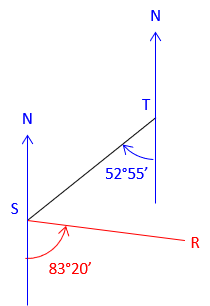 |
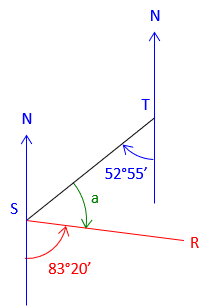 |
| Add the back-bearing TS | |
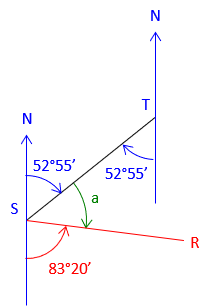 |
a = 180°00'-(52°55'+83°20') = 43°45' |
(2) Example 2
The bearing of ZU is S 23°55’07” E; the bearing of UH is N 78°05’00” E.
What is the defelction angle at U from Z to H?
| Start with the given information. | Label what we're determining |
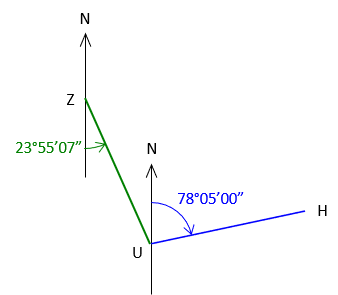 |
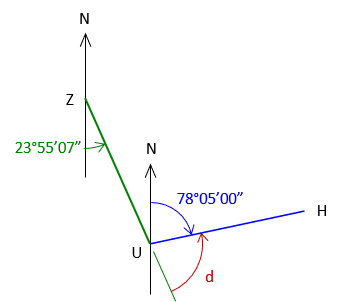 |
| Add the back-bearing UZ | |
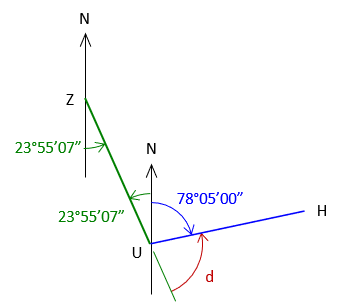 |
d = 180°00'00"-(23°55'07"+78°05'00") = 77°59'33" A deflection angle must have a suffix to indicate turning direction defl angle = 77°59'33" L |
b. Azimuths
(1) Example 1
The azimuths of lines JK and KL are 82°16'55" and 151°48'15", respectively.
What is the angle right at K from J to L?
| Start with the given information. | Label what we're determining. |
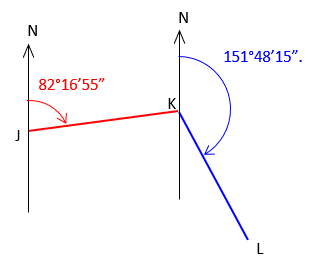 |
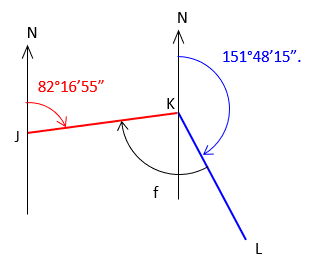 |
| Add the back-azimuth for line KJ | |
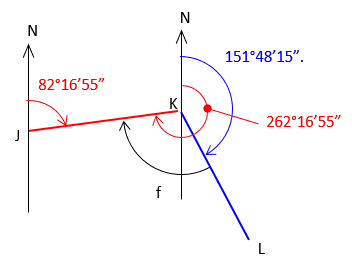 |
f = 262°16'55"-151°48'15" = 110°28'40" |
(2) Example 2
Azimuth of line WX is 215°35’; azimuth of line XT is 130°50’
What is the deflection angle at X from W to T?
| Start with the given information. | Label what we're determining. |
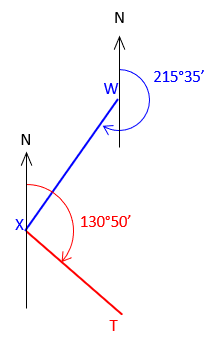 |
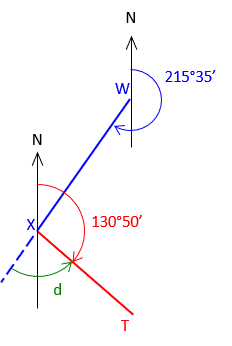 |
| Extend WX through X and add the azimuth of WX | |
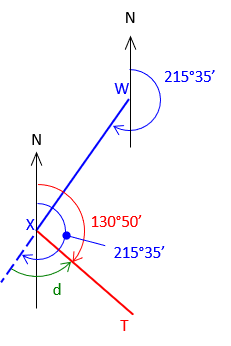 |
d = 215°35'-130°50' = 84°45' A defl angle must end with an L or R suffix to indicate turn direction. defl angle = 84°45' L |